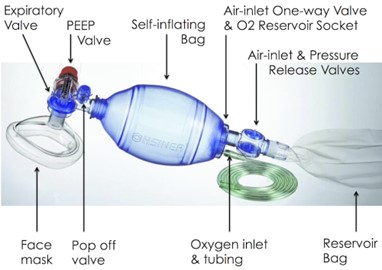Newborns’ Basic Needs
Newborns’ Basic Needs ( 4 Questions)
A nurse is assessing a newborn who has not cried or breathed spontaneously since birth.
The nurse rubs the newborn’s back and feet, but there is no response.
What is the next action that the nurse should take?
Chest compressions are only indicated if the heart rate is below 60 beats per minute after 30 seconds of effective ventilation
Oxygen via nasal cannula is not an appropriate method of delivering oxygen to a non-breathing newborn.
Provide positive pressure ventilation with a bag and mask.
This is because the newborn has not established spontaneous breathing and needs immediate respiratory support. According to the NRP 7th edition, positive pressure ventilation should be initiated within the first minute of life for non-breathing or gasping newborns.
Suctioning the newborn’s mouth and nose with a bulb syringe may cause bradycardia and delay ventilation.
The correct answer is choice C. Provide positive pressure ventilation with a bag and mask.
This is because the newborn has not established spontaneous breathing and needs immediate respiratory support. According to the NRP 7th edition, positive pressure ventilation should be initiated within the first minute of life for non-breathing or gasping newborns.
Choice A is wrong because chest compressions are only indicated if the heart rate is below 60 beats per minute after 30 seconds of effective ventilation.
Choice B is wrong because oxygen via nasal cannula is not an appropriate method of delivering oxygen to a non-breathing newborn.
Choice D is wrong because suctioning the newborn’s mouth and nose with a bulb syringe may cause bradycardia and delay ventilation.
The normal respiratory rate for a newborn is 30 to 60 breaths per minute. The normal heart rate for a newborn is 100 to 160 beats per minute.

